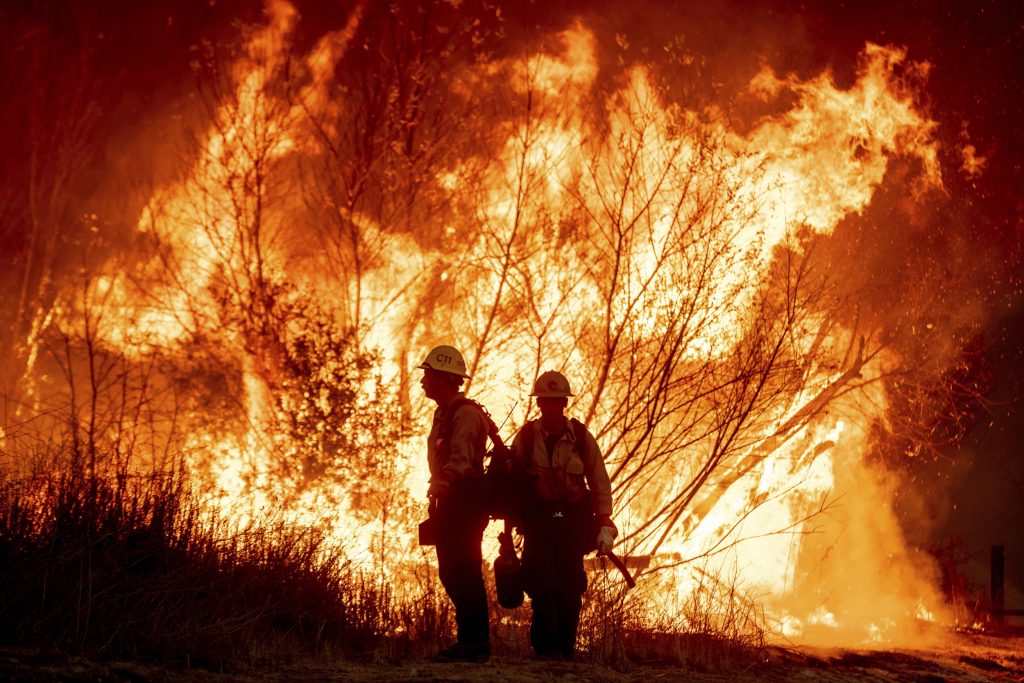The recent wildfires that ravaged parts of Los Angeles have brought into sharp focus the complexities of California’s sanctuary laws and their potential impact on public safety. A person of interest in the Woodland Hills fires, Juan Manuel Sierra, a Mexican national residing in the U.S. illegally, has been identified by Immigration and Customs Enforcement (ICE) as a potential arson suspect. While ICE has issued a detainer for Sierra, the application of California’s sanctuary laws may prevent his detention by federal immigration authorities, raising concerns about the potential for dangerous individuals to evade deportation.
The controversy surrounding Sierra’s case highlights the ongoing tension between state and federal authorities over immigration enforcement. California’s sanctuary laws, designed to protect undocumented immigrants from undue scrutiny and deportation, limit cooperation between local law enforcement and ICE. These laws prohibit local authorities from inquiring about an individual’s immigration status or sharing such information with federal agencies. Critics argue that these laws create a loophole that allows criminal aliens to remain in the country, posing a potential threat to public safety. Proponents, however, maintain that these laws are essential for fostering trust between immigrant communities and law enforcement, ensuring that individuals are not afraid to report crimes or cooperate with investigations for fear of deportation.
The situation has been further inflamed by comments from former President Donald Trump, who has consistently criticized sanctuary policies. Trump has argued that these laws obstruct efforts to deport criminal aliens and prioritize the rights of undocumented immigrants over the safety of citizens. He has specifically pointed to the allocation of resources to aid immigrants in sanctuary cities, arguing that these funds could be better utilized for fire prevention and response efforts. This perspective resonates with those who believe that sanctuary laws undermine public safety and divert resources from essential services.
The details surrounding Sierra’s alleged involvement in the fires remain under investigation. He was initially detained by the Los Angeles Police Department (LAPD) for a felony probation violation, although it is unclear why he wasn’t charged with arson directly. Sierra has a history of encounters with law enforcement, including a conviction for assault with a deadly weapon in 2023. ICE confirmed its detainer request, indicating their intent to take custody of Sierra upon his release from local custody. However, the LAPD denied having information about the detainer, further illustrating the communication gap between local and federal agencies under California’s sanctuary laws. This lack of clarity and coordination raises concerns about the effectiveness of current procedures in apprehending and deporting individuals who pose a threat to public safety.
The investigation into the Los Angeles fires is multifaceted, encompassing several distinct incidents. While arson is suspected in the Kenneth fire, the causes of other fires, such as the Palisades, Eaton, and Hurst fires, are being attributed to other factors, including a reignited firework and downed power lines. The complex nature of these investigations highlights the challenges faced by authorities in determining the exact causes and holding responsible parties accountable.
The case of Juan Manuel Sierra has become emblematic of the broader debate surrounding sanctuary laws and their implications for public safety. The conflicting perspectives on this issue underscore the need for a comprehensive and nuanced approach to immigration enforcement that balances the rights of individuals with the need to protect communities. Moving forward, it is crucial for policymakers and law enforcement agencies to engage in constructive dialogue to address the challenges posed by sanctuary laws and develop strategies that ensure both public safety and the fair treatment of immigrants. This will require careful consideration of the various factors at play, including the potential risks posed by criminal aliens, the importance of community trust in law enforcement, and the need for efficient and effective immigration policies.










